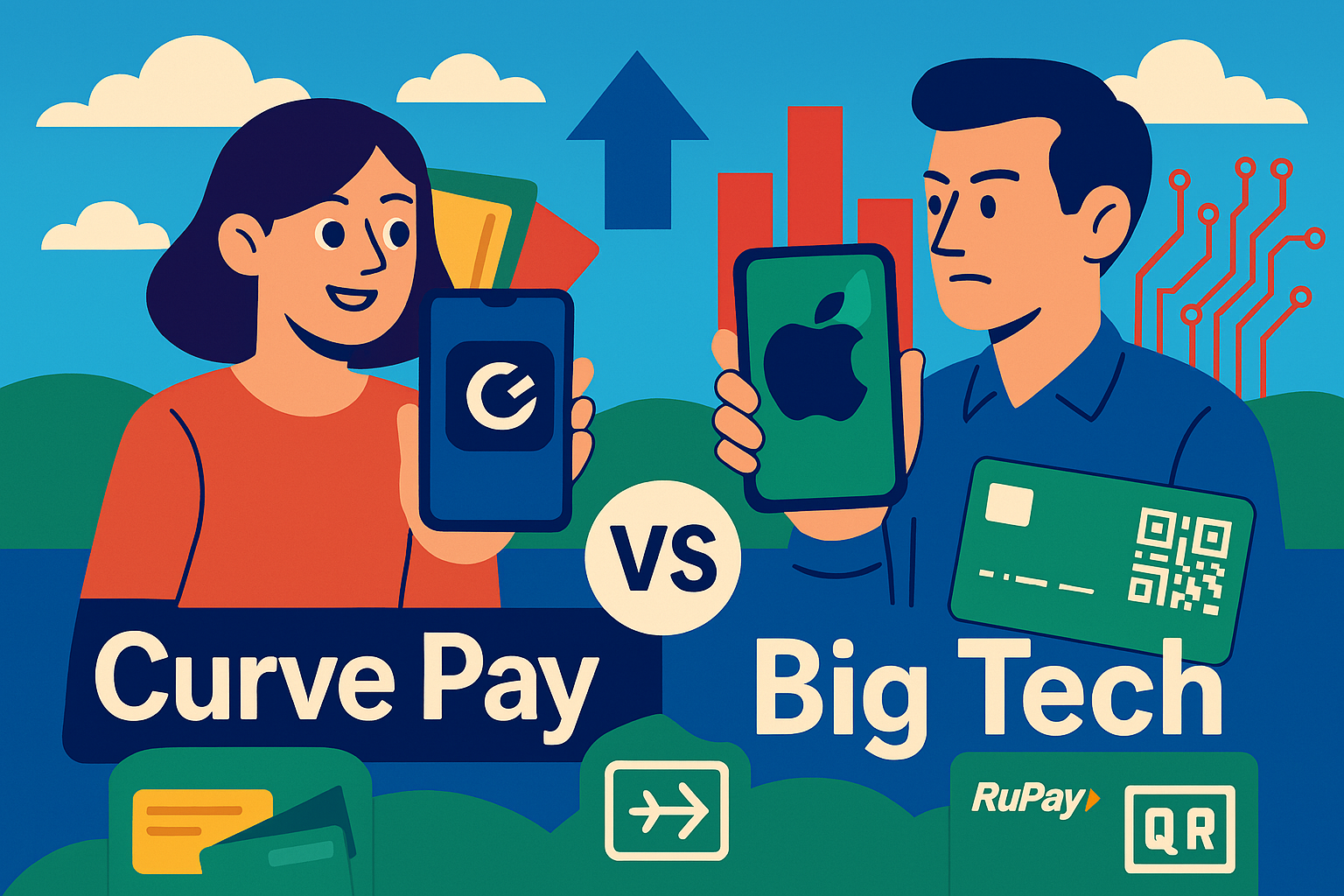
There’s a quiet revolution happening in payments—and for once, it’s not coming from Silicon Valley.
London-based Curve Pay has officially stepped into the wallet wars, offering a multi-card, fee-free alternative to Apple Pay. It’s launching first on Android in the UK and Europe (with iOS coming soon), but this isn’t just another digital wallet. It’s a signal—one that could reshape pricing, payment rails, and power dynamics far beyond Europe, especially here in APAC.
So, what’s really at stake? Let’s break it down.
1. The Real Disruption: Pricing Power Shifts
For years, wallet providers like Apple Pay and Google Pay have dominated with pricing models that aren’t exactly transparent. Merchants pay blended merchant discount rates (MDRs), often with little clarity on how much goes to issuers, acquirers, or the wallet itself.
But Curve Pay is shaking things up. By pushing for fee-free NFC access (already approved in the EU, under review in the UK), it’s opening the door to more transparent—and potentially lower—costs for merchants. If more wallets can bypass toll fees and connect directly to hardware, pricing innovation will follow.
And that could force schemes and acquirers to rethink their fee structures. The days of relying on gatekeepers for protection might be numbered.
2. The Rise of Domestic Rails: RuPay, PromptPay & Local QR Codes
In APAC, where domestic payment rails like RuPay (India), PromptPay (Thailand), DuitNow (Malaysia), and Napas (Vietnam) are already thriving, Curve’s model is a wake-up call.
These local systems already offer lower interchange fees and are gaining traction in SME, transit, and government payments. But Curve’s flexibility—letting users assign smart rules or even switch payment methods after a transaction—could inspire these domestic networks to become more modular and interoperable.
Imagine a RuPay card sitting inside a Curve-like layer that works seamlessly with UPI rails. Or national QR ecosystems integrating with a wallet that adds rewards, smart spending rules, or even crypto. The possibilities are intriguing.
3. Schemes: From Control to Collaboration?
Visa and Mastercard have spent decades building secure, scalable payment rails. But with new wallets disrupting the interface layer—and governments backing local alternatives—their pricing and positioning are under scrutiny.
They now face a critical question:
- Do they double down on proprietary rails?
- Or do they partner with fintechs and regulators, offering open APIs and co-developed wallet ecosystems?
Ironically, Curve’s model—which doesn’t issue cards but relies on users’ existing ones—could actually increase scheme-backed card usage. But it would happen outside the schemes’ own apps or experiences, forcing them to adapt.
4. A New Idea: An “Interoperable Wallet Layer” for Closed & Open Loop Systems
Here’s a thought I haven’t seen explored much:
What if we had a universal wallet interface—brand-agnostic—that could integrate not just open-loop cards (Visa, Mastercard, RuPay), but also closed-loop programs, loyalty points, vouchers, local QR balances, and even stablecoins?
A system where:
- Merchants decide the order of payment acceptance (e.g., points first, QR second, card last).
- Consumers set their preferred funding sources (e.g., wallet balance first, stablecoin next, RuPay card last).
This wallet wouldn’t issue anything—it would orchestrate everything. The UX and operational gains for both merchants and consumers could be massive.
Final Thoughts
Right now, Curve Pay is a UK and Europe story. But its implications are global. As fee models open up, domestic networks evolve, and wallet layers gain traction, APAC is uniquely positioned to leapfrog with more inclusive, locally relevant innovations.
The future of payments isn’t just Big Tech vs. banks.
It’s modular, multi-rail, and merchant-first.
